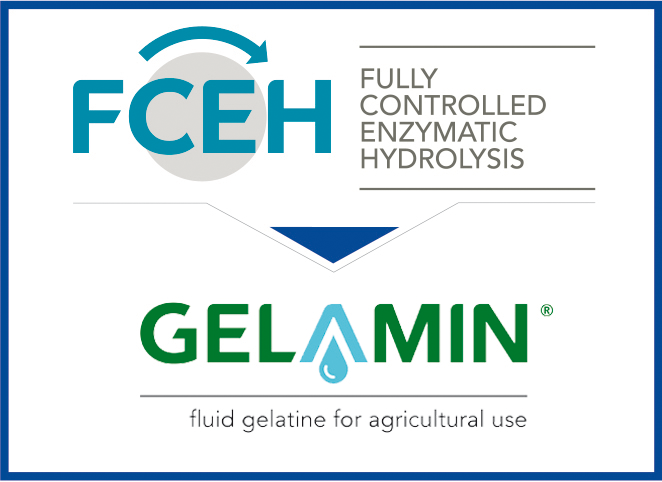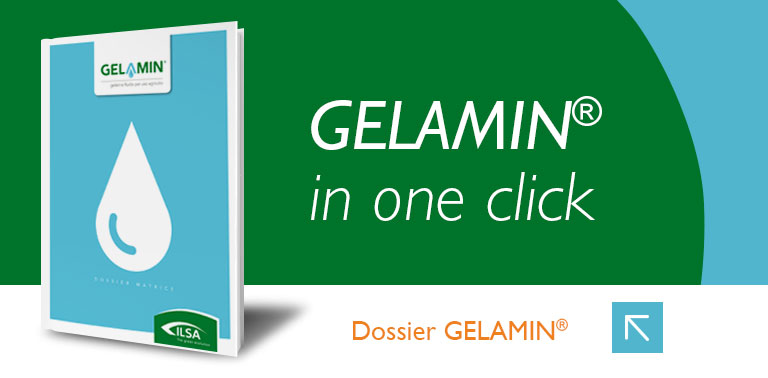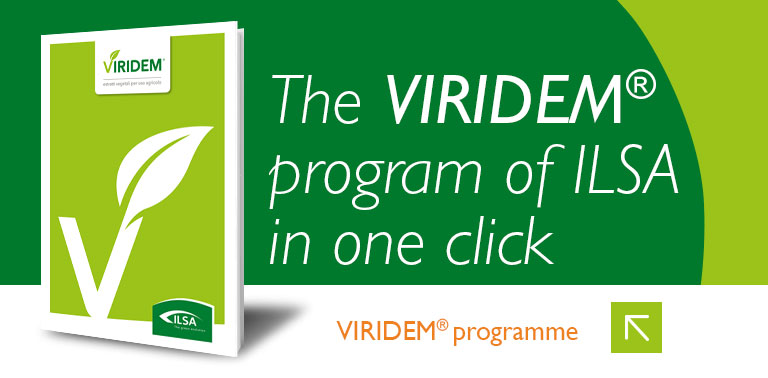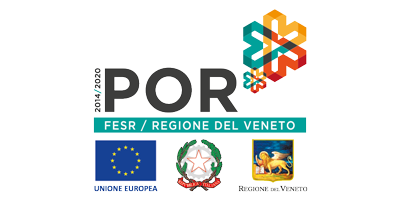Editorials
Enzymatic Hydrolysis vs. Chemical Hydrolysis
20/12/2018
What is hydrolysis and what are protein hydrolysates?
The hydrolysis process enables obtaining the so-called "protein hydrolysates". Hydrolysis is the action of separating the bonds forming an organic or inorganic compound in an aqueous environment and allows obtaining simple compounds with a nourishing or plant stimulating action. Hydrolysis can occur thanks to water, temperature, chemical substances (chemical hydrolysis) or with the help of specific enzymes (enzymatic hydrolysis).
In the case of organic molecules, such as proteins, complex structures containing many amino acids bound together to form so-called peptides, chemical compounds or suitable enzymes are used to separate them in correspondence of precise peptide bonds. The role of proteins in the plant kingdom is manifold, some proteins are the main constituents of plant tissues, other proteins have the task of transferring particular substances from one part to another, while others yet act as catalysts for the biochemical reactions necessary for sustaining life. Amino acids, instead, have a carrier role, i.e. they promote the absorption and transfer of mineral elements from the ground to the plant; they are also the building blocks for forming proteins. In conditions of environmental stress, amino acids such as proline, hydroxyproline, etc. are like “supplements” which are fundamental for overcoming adverse conditions and for allowing the plant to pursue its vegetation cycle. Peptides contain few amino acids and play an important role in regulating the size of the vegetative buds, in activating the plant's defence system and are considered growth regulators as they promote cell multiplication .
How are protein hydrolysates obtained?
To produce the protein hydrolysates used in agriculture as Bio-stimulants and Fertilisers, there are two production processes:
- Enzymatic hydrolysis: it is a process of protein (of animal or vegetable origin) hydrolysis which takes place thanks to specific and selective enzymes able to separate the chain of amino acids at specific points. This process is called "Gentil process", as it occurs inside controlled bioreactors with a low temperature (40-50 ° C) and a pH close to neutral, optimal conditions that allow the enzymes to hydrolyse the protein substrate and to preserve the amino acids in their natural form (levorotatory form).
- Chemical hydrolysis: it is a process of protein (of animal origin) hydrolysis which takes place with the aid of a chemical substance (sulphuric acid, sodium hydroxide, etc.) and therefore with an acidic or basic pH and in general, at a high temperature (> 100°C). Chemical hydrolysis is an aggressive process that aims at obtaining a product with a greater quantity of total amino acids, but one which brings with it many disadvantages, including amino acids which cannot be absorbed in their dextrorotatory form, high salinity, limited miscibility, etc.
How is the quality of protein hydrolysates determined?
One of the parameters used to evaluate the quality of a protein hydrolysate is its degree of racemization, which takes into account the quantity and availability of amino acids. Racemization is a natural phenomenon which causes a mutation of amino acids from a levorotatory to a dextrorotatory form. In nature, and also in enzymatic hydrolysis, amino acids are found in a levorotatory form, i.e. when seen under a microscope, the polarised light will have a left-handed orientation, while dextrorotatory amino acids form due to the aggressiveness of the chemical hydrolysis process which modifies the natural form of the amino acid, and therefore, when seen under the microscope, the polarised light will have a right-handed orientation. The latter are considered a negative feature of the quality of a bio-stimulant and/or fertiliser, as dextrorotatory amino acids are never absorbed by the plant. Furthermore, high temperatures cause a denaturation of the organic molecules found in the mother matrix (vitamins, flavonoids, etc.).
Enzymatic hydrolysis, on the other hand, as it takes place in a controlled environment at low temperatures and using enzymes, allows for zero racemization and consequently a high presence of L-amino acids (biologically active). The only ones recognised by plants. The end product of this process is characterised by good stability, low salinity and good miscibility with all products on the market. In the following table some differences between the two types of hydrolysis are highlighted according to certain parameters.
| Parameter | ENZYMATIC HYDROLYSIS | CHEMICAL HYDROLYSIS |
|---|---|---|
| Homogeneity | YES | NO |
| Purity | YES | NO |
| Stability | YES | NO |
| Ash content | LOW | ELEVATE |
| Odour | ABSENT | PRESENT |
| Miscibility | YES | NO |
In conclusion, in a protein hydrolysate, whether amino acids are present or not is not the only important factor, but it is essential that these should be levorotatory, otherwise they are not active and therefore useless for the plants. ILSA protein hydrolysates (Gelamin® and the Fabaceae Hydrolysate®) are obtained from an enzymatic process called FCEH® (Fully Controlled Enzymatic Hydrolysis), which allows obtaining exclusively amino acids in levorotatory form (α-amino acids). This enzymatic production process is exclusive to ILSA and represents a guarantee of quality for all the formulations obtained from the protein matrix (animal or vegetable). Some of these nutritional formulas are allowed in organic farming and others in conventional farming.
Agricultural producers, therefore, will obtain the following benefits by using a formulation deriving from an enzymatic process:
- A formulation based on free amino acids in a levorotatory form which can be absorbed by the plant and which have a direct action on it (vegetative growth, flowering, fruit growth, tolerance towards environmental and chemical stresses, etc.).
- A homogeneous and stable formulation, which can be more easily mixed with all the products on the market (mineral fertilisers, synthetic and plant protection hormones) with a consequent economic saving on the number of cultivation interventions.
- A low salinity product which does not cause phytotoxic effects on the productive organs (flowers, fruits, etc.).
Visit our website www.ilsagroup.com and discover the range of bio-stimulants and fertilisers based on Gelamin® and Fabaceae Hydrolysate ®.






.png)
















